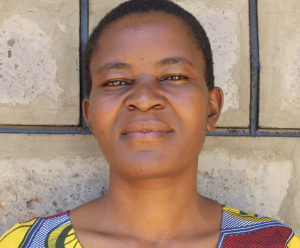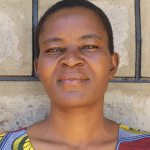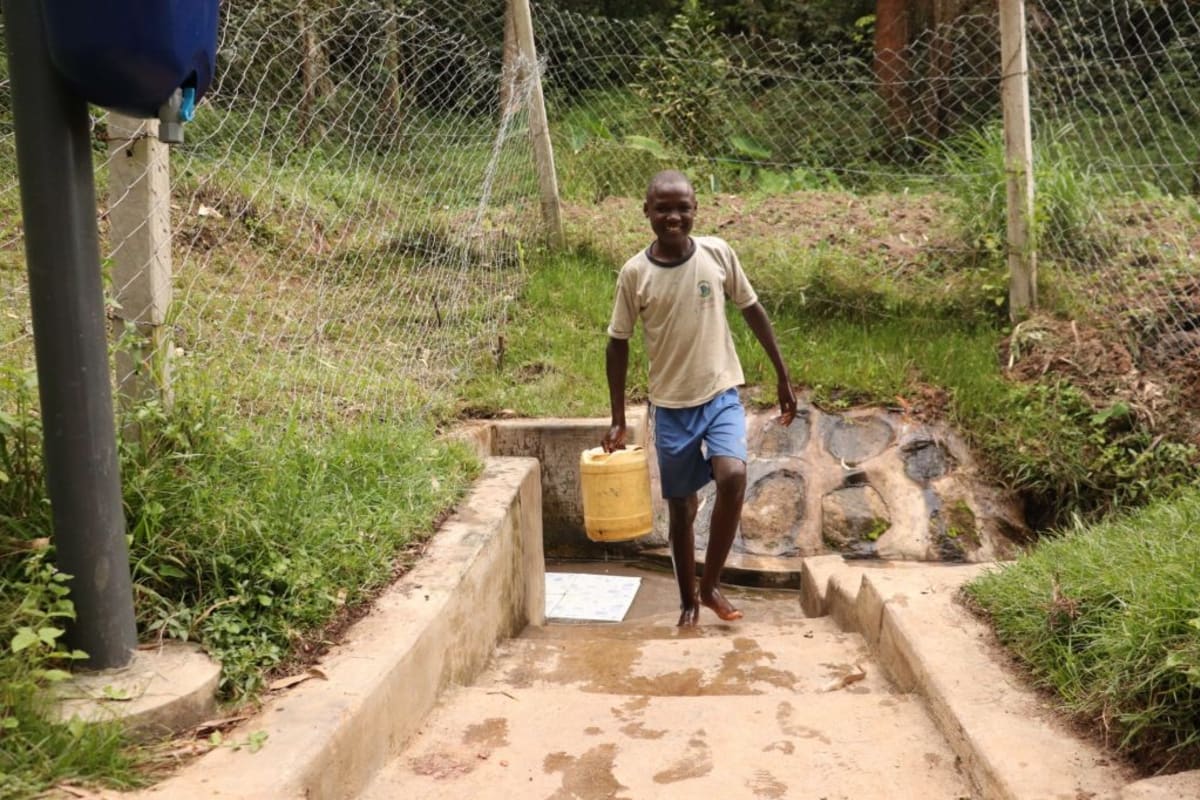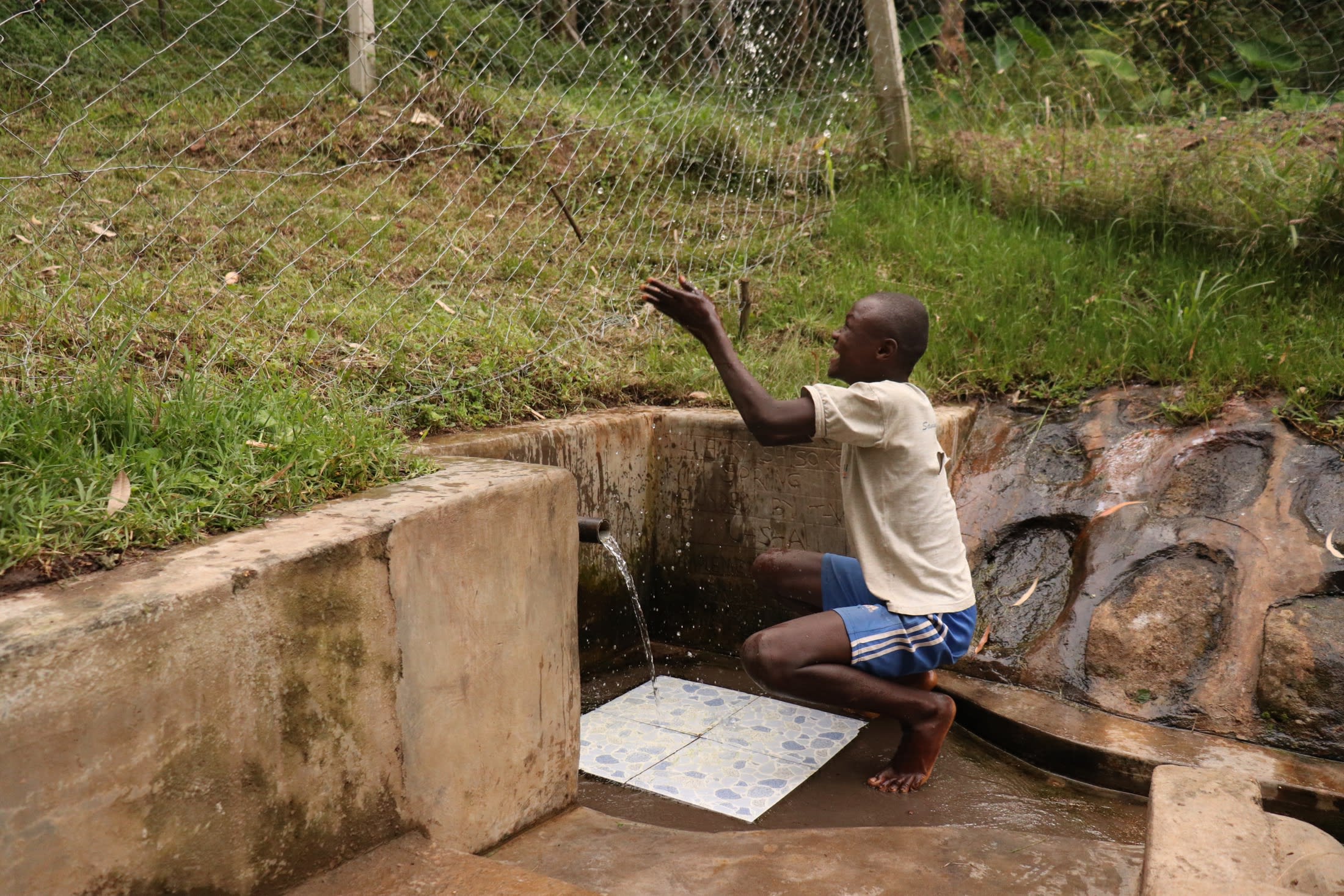"The current water situation has really affected my family because we have been sick for a long time. We were treating ourselves for malaria but when we did all of the tests, we discovered that it was amoeba and typhoid. The little money we get is spent on medication," said 55-year-old farmer and mother Penina Lizunela.
Penina is one of 210 people in Mahondo who depends on Henry Shisoko Spring for all of her daily water needs. But the spring is open to contamination, even after the community tried to protect it themselves many years back. The spring currently consists of just a few blocks of cement and a badly rusting discharge pipe.
The spring's catchment area, where the water originates underground, has gaping holes in it. The holes let surface runoff from the rains flow into the spring water, carrying farm chemicals, residues from animal waste, and dirt and soil directly with the water people fetch to drink. There is a definite odor to the water coming from the pipe, we noted during our visit.
When people contract waterborne and water-related illnesses from the spring water, they drain their finances on hospital visits and medications, like Penina. Time spent at home or in the hospital sick also means lost time at work for adults and at school for children.
More time is wasted at the spring waiting to fetch water since not all of the spring's natural yield is captured in the falling apart structure that remains. Many women begin fetching water as early as 5:00 am in an attempt to avoid the crowds. Otherwise, the lines delay their entire daily routines and they have to rush to the spring again in the evening to have enough water for cooking dinner.
"I have to wake up early to help my mother fetch water, and due to the many people at the spring, it makes me late going to school, which affects my performance," said young Laiza.
Mahondo community members practice both dairy and subsistence farming. At least every home has a dairy cow which they milk in the morning and again in the evening to sell in town. People plant crops like maize, beans, and groundnuts, the latter of which were being harvested during our last visit and hawked in town. Mahondo is unique due to its many rivers, providing people with another major occupation: harvesting sand to sell to other community members and villages.
What We Can Do:
Spring Protection
Protecting the spring will help provide access to cleaner and safer water and reduce the time people have to spend to fetch it. Construction will keep surface runoff and other contaminants out of the water. With the community’s high involvement in the process, there should be a good sense of responsibility and ownership for the new clean water source.
Fetching water is a task predominantly carried out by women and young girls. Protecting the spring and offering training and support will, therefore, help empower the female members of the community by freeing up more of their time and energy to engage and invest in income-generating activities and their education.
Training on Health, Hygiene, COVID-19, and More
To hold trainings during the pandemic, we work closely with both community leaders and the local government to approve small groups to attend training. We ask community leaders to invite a select yet representative group of people to attend training who will then act as ambassadors to the rest of the community to share what they learn. We also communicate our expectations of physical distancing and wearing masks for all who choose to attend.
The training will focus on improved hygiene, health, and sanitation habits in this community. We will also have a dedicated session on COVID-19 symptoms, transmission routes, and prevention best practices.
With the community’s input, we will identify key leverage points where they can alter their practices at the personal, household, and community levels to affect change. This training will help to ensure participants have the knowledge they need about healthy practices and their importance to make the most of their water point as soon as water is flowing.
Our team of facilitators will use a variety of methods to train community members. Some of these methods include participatory hygiene and sanitation transformation, asset-based community development, group discussions, handouts, and demonstrations at the spring.
One of the most important issues we plan to cover is the handling, storage, and treatment of water. Having a clean water source will be extremely helpful, but it is useless if water gets contaminated by the time it is consumed. We and the community strongly believe that all of these components will work together to improve living standards here, which will help to unlock the potential for these community members to live better, healthier lives.
We will then conduct a small series of follow-up trainings before transitioning to our regularly scheduled support visits throughout the year.
Training will result in the formation of a water user committee, elected by their peers, that will oversee the operations and maintenance of the spring. The committee will enforce proper behavior around the spring and delegate tasks that will help preserve the site, such as building a fence and digging proper drainage channels. The fence will keep out destructive animals and unwanted waste, and the drainage will keep the area’s mosquito population at a minimum.

 Protected Spring
Protected Spring
 Rehabilitation Project
Rehabilitation Project








































